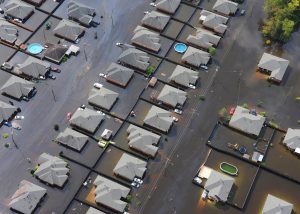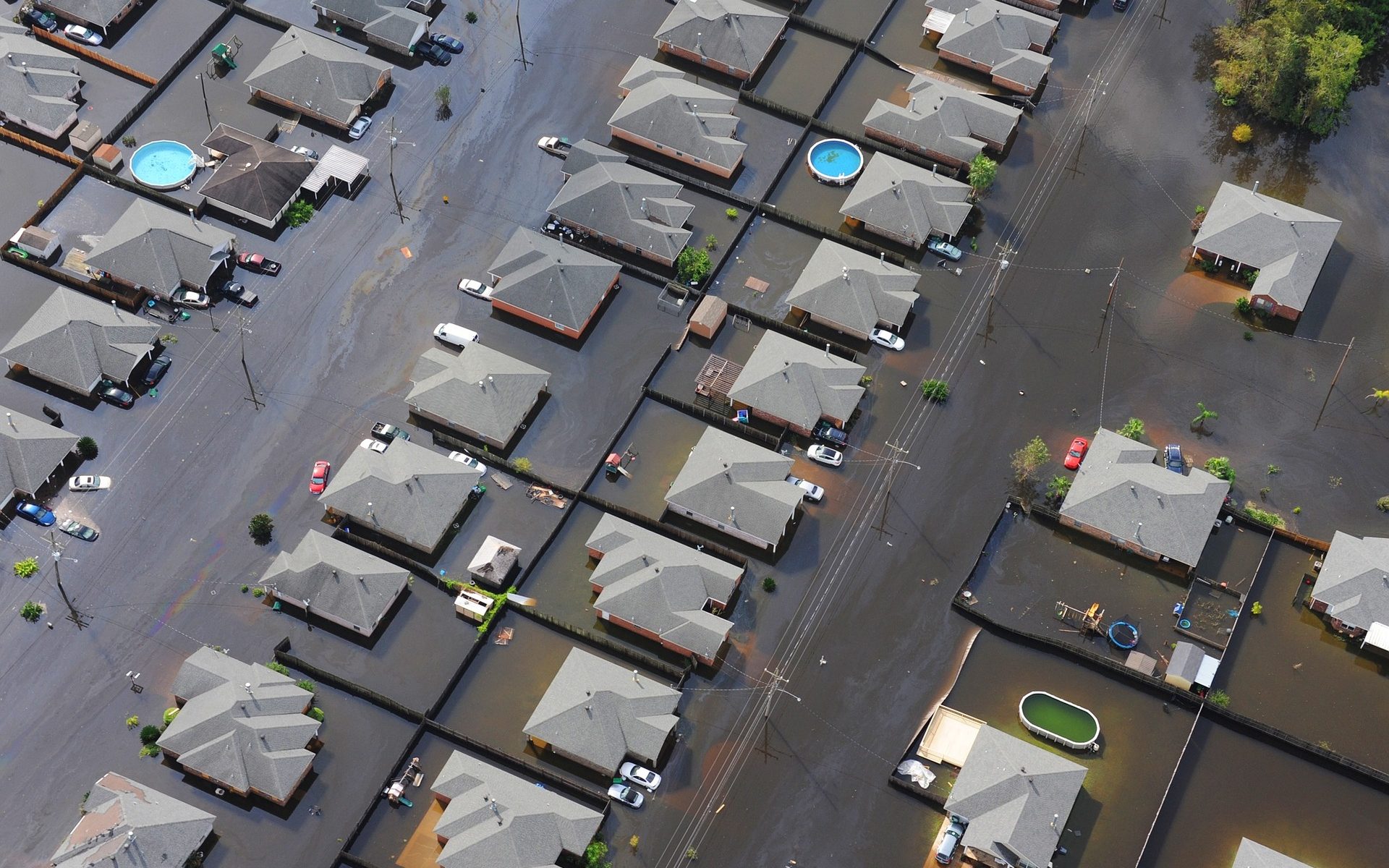After a record-breaking 2017 hurricane season and a string of strong coastal storms over the winter, flooding has been in the news a lot recently. June brings the beginning of the Atlantic hurricane season. Floods can be catastrophic, as well as deadly. Therefore, you should have some understanding of your exposure to flood risk, to protect yourself and your property, especially if you own a home or are considering building a home.

While floods can happen anywhere and can be caused by a variety of factors, there are circumstances that make flooding more likely. If you live in a low-lying area near a river or the coast, especially in a densely developed area, you are likely exposed to an elevated flood risk. If your property is protected by a flood control structure, the hazards are reduced, but not eliminated. But knowing that you have exposure does not tell you how high flood waters can get.
The flood insurance rate maps (FIRMs) prepared by FEMA are useful tools for managing flood risk. The FIRMS compile flood hazard studies of significant waterways and are used as a basis for flood insurance underwriting and flood resistant construction codes in most jurisdictions. You can look at the FIRM for your neighborhood and see whether your home is in an location where the probability of a flood occuring is greater than one percent each year. If the flood hazard has been sufficiently studied, additional infomration will be available, such as the elevation of the flood waters within the inundation area and whether coastal wave action is expected. If each floor of your home is above the reported flood elevation and no wave actions is predicted, then the probability that your home would flood is calculated to be less than one percent per year.
The one percent per year flood hazard is commonly referred to as the “100-year flood” as it corresponds to an event that would be exceeded approximately once every 100 years on average. Some people are confused by this, believing, incorrectly, that a “100-year flood” could or would happen only once in 100 years. This sounds like something that is not likely to happen in someone’s lifetime, especially if such an event has occurred in recent memory. However, more than one “100-year” event can occur in relatively short periods of time. Hurricane Harvey was the third “500-year” flood in three years for Houston. Ellicott City, Maryland suffered floods from “1000-year” rain events twice in less than two years. Note that “1000-year” or “500-year” events are also “100-year” events since they are more severe than the event that has a one percent probability of exceedance per year.
Something that has a one percent probability of being exceeded may sound pretty unlikely, but that is not quite right. Assume you buy a home and take out a 30-year mortgage. If your first floor has a one percent probability of being flooded every year, then the probability that you are flooded before your mortgage is paid is about 26 percent. That is about the same as seeing heads on two consecutive coin flips and slightly less than the probability on election day in 2016 that Donald Trump would win the presidential election.
There are additional complications to keep in mind when using flood maps. Forecasts for floods and a lot of other natural hazards are probabilistic based on available historical records. Contrast this to weather forecasting, which uses current observations and physical science-based models to predict a condition in the future. Unquestionably, a probabilistic forecast is better than no forecast at all, but they have limitations. The historical data on which the forecast is based is usually short relative to the return periods of the event of interest. Records of rainfall or river levels at a particular location may be available for only a few decades and may be incomplete, especially for the early records. While it is mathematically possible to produce a model from this sort of data that will predict the “100-year” or event “1000-year” event, it is hard to be confident about such a forecast. Ideally, the historical record would be long enough to see enough extreme events to be able to observe the average return time, rather than extrapolate it from smaller events.
Another challenge is that probabilistic models assume that historical floods are representative of those in the future. Climate change is widely believed to increase the energy and moisture in the atmosphere, increasing the likelihood and severity of storms. This violates the underlying assumption on which a probabilistic forecast is based. A probabilistic forecast also cannot account for other human-made changes that affect runoff and drainage, such as installing pavement and hardscapes, building in flood plains and filling of wetlands and other drainage paths. For example, development is blamed for increased flooding in Houston.
What does this all mean? You can look at the FIRMs and determine whether you live in a flood zone. If you are building a new house in a flood zone, the FIRM and the building code will provide guidance for setting floor elevations and constructing the building’s substructure to resist flooding. However, this does not guarantee that your home will not flood. It also does not provide guidance for mitigating the risk for an existing building.
An architect or engineer familiar with flood hazard and flood-resistance construction can help. While code compliance for new construction is mandatory, it represents just a minimum. Further risk reduction measures can be chosen based on your risk tolerance and budget. Some risk mitigation measures may save you money on flood insurance. Architects and engineers can provide you with options.
Do you have a question about flood risk and mitigation? Read More.
The information and statements in this document are for information purposes only and do not comprise the professional advice of the author or create a professional relationship between reader and author.


